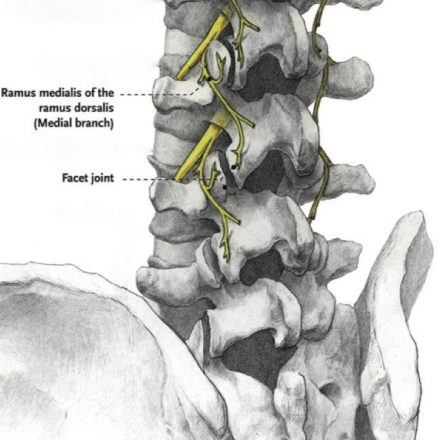What is Pulsed Radiofrequency (RF) Neurotomy?
Pulsed radiofrequency (RF) neurotomy is a procedure that is performed to reduce transmission of pain through nerves from certain body parts, for example the head (occipital nerve pulsed RF neurotomy), the chest or abdominal wall (intercostal nerve pulsed RF neurotomy) or the shoulder (suprascapular nerve pulsed RF neurotomy).
Pulsed RF neurotomy involves applying a high-intensity electric field from the tip of a specialised, insulated needle placed as close as possible to the target nerve. This field causes microscopic changes in the nerve which can reduce the excessive firing of the small pain nerve fibres due to chronic pain. Pulsed RF neurotomy developed from continuous (or thermal) RF neurotomy but has little or no heating effect due to its pulsed delivery. Hence, pulsed RF neurotomy can be applied to larger nerves without resulting in weakness or loss of normal sensation.
How is the procedure performed?
The procedure is performed in an operating theatre as a day-only stay.
Performing the procedure itself requires about half an hour but you will need to arrive about an hour before the procedure to be prepared for theatre.
A specialist anaesthetist will care for you throughout your procedure. Your anaesthetist will place an intravenous cannula (“drip”) in your hand or arm and administer sedation and oxygen appropriate to the procedure whilst monitoring your vital signs.
You will be asked to lie with the area to be treated exposed. Padding will support your head and, if lying face down, your arms, chest and legs. The procedure will be performed using a sterile technique which involves use of antiseptic solution on your skin, sterile drapes and gloves. X-rays and/or nerve stimulation will be used to place the needle as close as possible to the target nerve. Nerve stimulation may require your help to find the nerve by responding to questions during the procedure. The area around the site of treatment, for example the back of your head, may need to be shaved to facilitate the finding of the nerve. The skin will be numbed with local anaesthetic before the special needles are inserted. Long-acting local anaesthetic will be injected through the needle at the end of the procedure with or without an injectable steroid.
(Diagram acknowledgement: Faculty of Pain Medicine, ANZCA)
What is the likely outcome?
Pulsed RF neurotomy may reduce pain for many weeks or months.
This period of reduced pain is often useful to facilitate other therapies such as shoulder physical therapy after suprascapular PRF neurotomy. However, the nerve may recover from the procedure and the pain may return. If helpful, the procedure can be repeated.
What are the potential complications?
The procedure is very safe but there are always risks of adverse effects.
Common, short-lived adverse effects include:
- pain and bruising at the site of the needle insertion.
- temporary numbness and weakness from local anaesthetic.
Uncommon adverse effects include:
- bleeding from the site of the needle insertion.
- infection at the site of the needle insertion.
- nerve irritation resulting in a temporary burning sensation (up to 6 weeks).
- transient steroid-induced agitation or blood sugar rise (in patients with diabetes).
Rare adverse effects include:
- nerve damage with lasting effects such as numbness, pain or weakness.
- damage to other structures, depending on site of treatment
- punctured lung for intercostal nerve procedures.
- severe reactions to medications.
- complications related to sedation (please discuss this with your anaesthetist).
How do I prepare for the procedure?
At the time of booking your procedure it is important that you declare if you:
- are taking any blood thinners, including over-the-counter medications.
- are taking medication for diabetes, especially insulin.
- have an implanted device such as a pacemaker or stimulator.
- could be pregnant (x-rays and medications may cause harm).
A few days before your procedure it is important that you:
- organise an adult to accompany you from hospital and stay overnight with you.
- notify your anaesthetist if you are unwell.
On the day of your procedure it is important that you:
- have nothing to eat for at least 6 hours before your admission time.
- may drink small amounts of water up until 2 hours before your admission.
- take your usual medications unless otherwise instructed.
- have a shower on the morning of the procedure.
What happens after the procedure?
You will recover from your sedation under specialised nursing care. Local anaesthetic from the procedure should minimise post-procedural pain. When it is safe, you will be discharged into the care of an adult. For the next 24 hours you should not drive or operate machinery, care for young children alone or conduct important business.
As the local anaesthetic wears off, your post-procedural pain may increase for a few days and may persist for a week or so. Most people can differentiate post-procedural pain from their chronic pain.
If you have any unexpected symptoms or side effects following the procedure you should contact your Brisbane Pain Medicine specialist, your family doctor or your nearest emergency department immediately.





